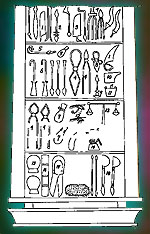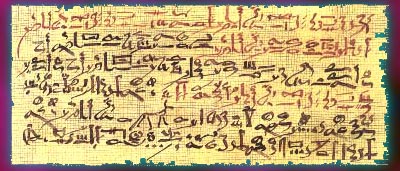

The oldest known physician is Imhotep. He lived around 2725 b.c. He was also known as a high officer, a pyramid builder, and an astrologer.
A popular belief is that the Ancient Egyptians new very little about anatomy. This proves to be false, because in the Ebers papyrus the ancient Egyptians say that a depressed skull fracture looked like a puncture in a pottery jar.
Doctors in Ancient Egypt usually went through years of hard training at temple schools. Usually in the arts of interrogation, inspection, and palpation.
Egyptian doctors new lots about the human body for their time. They studied the structure of the brain, and knew that the pulse was related to the heart. They could also cure many illnesses and set broken bones.
 Castor oil, along with figs and dates, were used as laxatives by the Egyptians.
Castor oil, along with figs and dates, were used as laxatives by the Egyptians. Tannic acid was valued by the Egyptians, because it helped heal burns. It was usually derived from acacia nuts. An acacia tree is pictured to the left.
Tannic acid was valued by the Egyptians, because it helped heal burns. It was usually derived from acacia nuts. An acacia tree is pictured to the left.
 Coriander was considered to have cooling, stimulant, carminative and digestive properties. It was also taken as a tea for stomach illness.
Coriander was considered to have cooling, stimulant, carminative and digestive properties. It was also taken as a tea for stomach illness.
 One of the main sources of Egyptian Medical practices is the Edwin Smith papyrus. It was written around 1700 B.C. but most of the information is based on texts written around 2640 B.C., Imhoteps time. The papyrus appears to talk mainly about wounds, and how to treat them, and surpassingly little about diseases.
One of the main sources of Egyptian Medical practices is the Edwin Smith papyrus. It was written around 1700 B.C. but most of the information is based on texts written around 2640 B.C., Imhoteps time. The papyrus appears to talk mainly about wounds, and how to treat them, and surpassingly little about diseases.